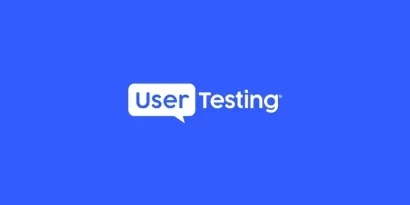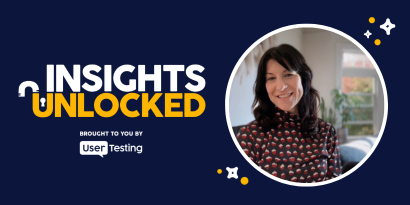
Episode 126 | July 15, 2024
Unite designers and developers with scalable design systems
In this episode, Nathan Isaacs talks with Parisa Bazl from Commvault about building scalable design systems that unite developers and designers.
Bridging the gap: creating scalable design systems with Commvault's Parisa Bazl
In our latest Insights Unlocked episode, Parisa Bazl, Head of UX at Commvault, provides invaluable insights on building scalable design systems that bridge the gap between designers and developers.
Parisa’s interview was recorded live at the UXDX conference in New York City where she gave a talk on the topic. Commvault is a leading provider of cyber resilience and data protection solutions, serving more than 100,000 organizations.
Introduction to scalable design systems
Creating a design system that scales efficiently is crucial for large enterprises. A design system is a library of reusable design elements and guidelines that can be applied across multiple products or projects. They provide efficiency, flexibility and consistency, as well as enabling teams to create a more unified user experience across your brand.
During the episode, Parisa summarizes her experiences introducing an object-oriented development framework to Commvault’s design system. This method, she explains, is pivotal in organizing patterns and components, thereby reducing the need for constant guidance.
"Design systems are the backbone of successful UX processes, but scaling them effectively is the real challenge." - Parisa Bazl
Addressing challenges in scaling
Scaling design systems presents several challenges, particularly in resource management.
Parisa doesn't shy away from addressing the hurdles faced by design teams, particularly in large enterprises. "Design teams are typically out-resourced by everyone else," she notes, emphasizing the importance of establishing clear standards to empower teams to work independently.
“It’s helped reduce some of the hand holding that was historically required when it came to just sort of making baseline updates to our core pages,” she said.

Starting with key user flows
The conversation touches on starting with key example pages or user flows and drilling down on those without necessarily thinking about the design system. "You have to write the book before you put it in the library," she advises.
“Just look at the use case that’s in front of you and then when you’re done with those, you abstract those into patterns, such as when someone is creating a new object or when they are deleting something,” she said. “And you start to bucket those things into those different categories so that you have that reference when you go and take on your next use case.”
Overcoming resistance in adoption
Resistance to new design systems can come from developers who fear increased workloads, and designers who may think such systems make them redundant, Parisa said.
She offers practical solutions, especially with developers. "When you start to speak their language, it takes away some of the mystery around design to make it easier for them to understand and so they are more willing to adopt it," she explains.
And with designers, she said, the framework “frees us up to have more time to look at the people aspect of technology.”
“So it’s not necessarily ‘How are we designing?,’” Parisa said, but rather, “‘What are we designing, and why?’”
"When you start to speak their language, it takes away some of the mystery around design." - Parisa Bazl
Implementing a scalable design system
“We’re often fed this narrative of an overnight success,” Parisa said. “But we have to work with the circumstances that we’re given.”
When you want to change an organization, or even just a product, it just takes time, Parisa said. “And it's important to understand that the idea itself—doesn't matter how good it is—it's not going to have traction if you cannot build the right investment and momentum around it by way of engendering trust and just making those inroads in an organization.”
The role of AI in design
The potential for AI to automate design decisions is immense. Parisa discusses how AI can handle routine tasks, freeing designers to focus on the human aspects of technology. However, she stresses that AI should be a tool to enhance user experiences, not replace the human touch.
“We need to now be thinking more and more critically about the people aspect of it, understanding what their wants and needs are, their fears, and how we can deliver value to them,” she said. “And then we use AI as a means for delivering that experience.”
Human-centric approach to technology
Despite rapid technological advancements, the focus should always remain on human experiences. Parisa believes that technology is about people, and the software is merely a delivery mechanism for their experiences. She encourages UX professionals to keep this perspective at the forefront of their work.
"Technology is first and foremost about people. The software is just a delivery mechanism for their experience." - Parisa Bazl
Emphasizing diversity in tech
Diverse viewpoints are essential in technology design. Parisa highlights the barriers to entry in tech, and shares her involvement with a program that trained underprivileged youth in design skills. The initiative not only opens career pathways but also enriches the tech industry with different perspectives and experiences
“A challenge as a leader is to consider how you can open up pathways for people who might not normally have it,” Parisa said. "Diverse viewpoints are essential in technology design."
Episode links:
- Commvault
- Parisa’s LinkedIn
- BLOG: What is DesignOps and why is it important?
- BLOG: A primer to design systems: Making yours in 5 steps
- PODCAST: Why your design system needs a business-centric approach










